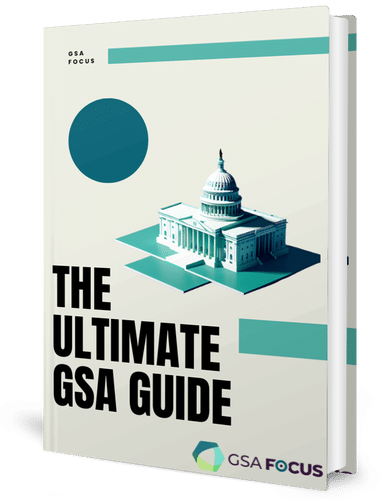Although the application itself is challenging enough, obtaining GSA contracts can provide fiscally rewarding benefits. But before jumping into the government market, it is vital to determine the profitability of your business. Calculating the projected ROI can set your expectations entering the market. Knowing your potential profits ensure that your hard work and commitment won’t go to waste. If you’re a small business, you can even take advantage of being part of the 80% who are granted GSA MAS contracts.
What is ROI?
Table of Contents
ToggleThe Return on investment (ROI) is the financial metric utilized to determine the probability of earning profit from an investment. It refers to the ratio that weighs in the cost of gains or losses from an investment. This is directly compared to the overall costs of the initial investment itself.
ROI can be calculated by getting the difference between the initial value of the investment and the final investment. The result would be the net return, which is divided by the cost of investment. You can tell if your investment can be considered a loss when the net returns’ value is negative. Consequently, a favorable outcome indicates that total returns exceeded total costs. ROI is usually expressed as a percentage, and you can achieve this by multiplying the quotient by 100.
The only disadvantage of ROI is that it does not entail how long the investment holds. You could expect that investors would prefer knowing the duration of its profitability to compare it with potential investments.
Expected Net Return
The transition of migrating all contracts to the new GSA Multiple Awards Schedule is in the works. The consolidated MAS Contracts was released just in time for the fiscal year 2020. This has given companies until July to prepare, although sales reports are expected to take some time to be released. That being said, the table below shows the expected net returns. It is based on the fiscal year 2019 sales mapped into the new GSA Schedule.
GSA Sales in 2019 Averaged $X per Contractor
| Large Category | LARGE CATEGORY |
| Facilities | $ 1,056,763,270.00 |
| Furniture & Furnishings | $ 992,358,783.00 |
| Human Capital | $ 482,579,291.00 |
| Industrial Products and Services | $ 1,010,203,573.00 |
| Information Technology | $ 15,387,521,495.00 |
| Miscellaneous | $ 297,216,100.00 |
| Office Management | $ 1,054,106,777.00 |
| Professional Services | $ 9,528,235,241.00 |
| Scientific Management and Solutions | $ 857,673,759.00 |
| Security and Protection | $ 1,015,923,695.00 |
| Transportation and Logistics Services | $ 496,950,386.00 |
| Travel | $ 542,577,463.00 |
As you can see, Large Categories: Information Technology and Professional Services are comparable to GSA IT Schedule 70 and GSA Professional Services Schedule (PSS). Almost the majority of IT Schedule 70 SINS are mapped to the IT Large Category. Accordingly, nearly all PSS SINs are mapped into the Professional Services Large Category. You can expect the Categories’ net returns to be similar to those of the legacy GSA Schedules in place of this. If we were to equate it to their percentages, it would be 47% for IT and 29% for PS.
Cost of Investment for Small Businesses
Here is the expected cost of investment in obtaining a GSA contract.
Getting GSA Contract
It is integral to work with a credible consultant to complete your GSA proposal application. Many companies offer a one-time payment of $5,000 to $15,000 to avail of their full services. Higher fees do not necessarily guarantee that your firm can qualify. Additionally, it does not translate to high-quality services unless it’s with reputable and well-known companies. However, acquiring an experienced consultant can save you time and bring you a compliant and audit-proof contract.
You would not want to overpay a consulting firm for subpar services. Instead, focus on their credibility to delivering a high-quality service.
GSA Maintenance
Many companies offer GSA maintenance services to be paid annually for $1,000 to $25,000. This involves all the maintenance tasks ensuring your compliance to sustain your GSA contract. The services usually include contract modification requests, sales reports, competitive research, GSA Advantage maintenance, and more.
Business Development
The payment for business development services varies, but it revolves between $5,000 and $50,000. This involves supplementary strategies that can improve your sales and marketing. If you want to target a specific market, specialists can help you develop long-term leads. They can also tweak your products and services through comprehensive market research to attract your target audience. Consultation with an expert who knows around the industry gives you a competitive edge in the federal market.



